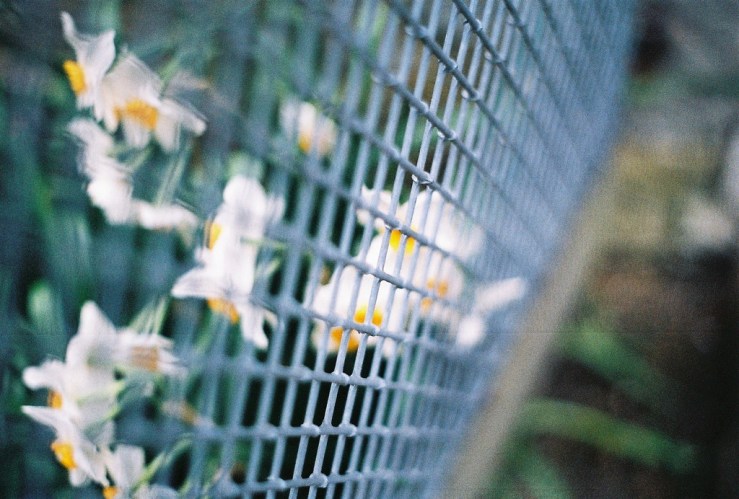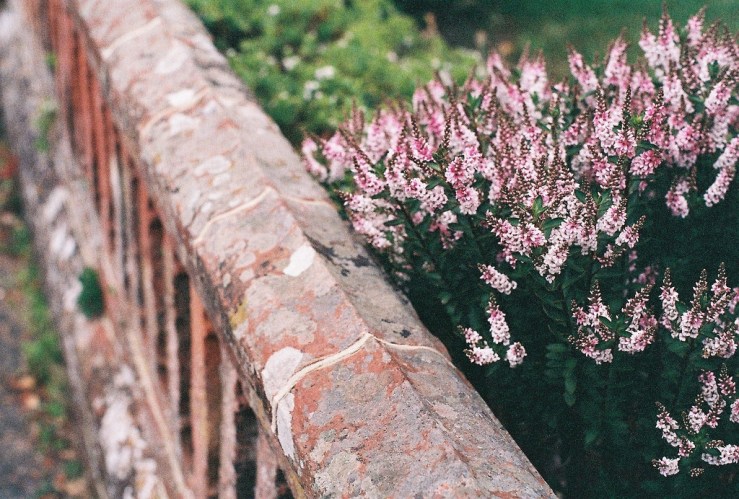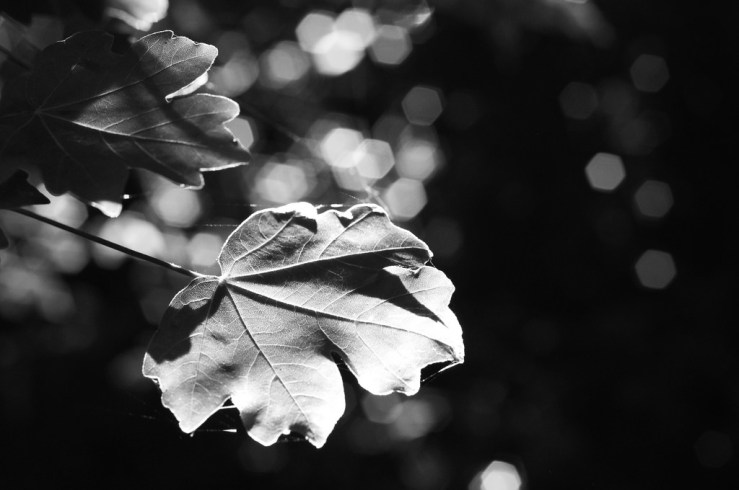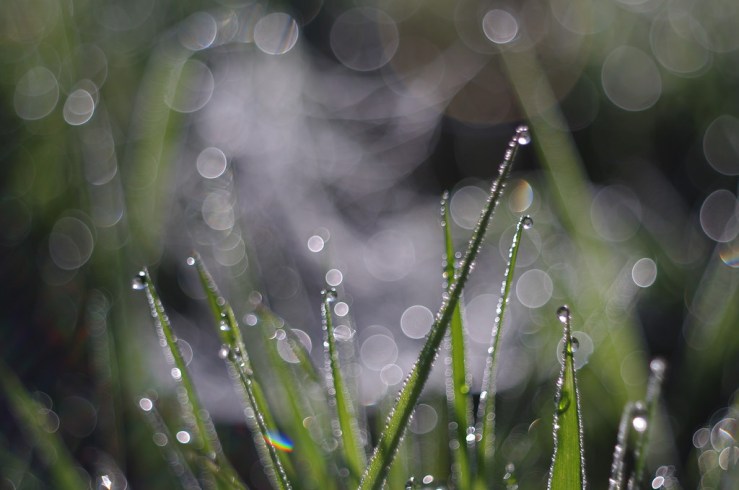My first post debuted on 35hunter back in December 2015.
Now, some 24 months and 110 blog posts later, it seems a good time to reflect on what I’ve learned – about blogging, about photography, and about myself.
This started as a single post, but quickly meandered in excess of 2000 words. The final tally was approaching 5000, So I’ve edited it down into a couple of (slightly!) smaller chunks for your easier digestibility.
Firstly, these 12 lessons are mostly about maintaining a photography blog –
1. Capture ideas when they come.
I learned from writing years ago that we’re all capable of great ideas. What separates us is how many we capture and craft into something.
The key is accepting that, when a potentially fabulous idea flashes across your mind at some random point during the day, however much you think you’ll remember it later, you rarely do. Then it’s lost and unexplored forever.
So we need to pin these seeds, these fragments down when they first manifest.
Carrying a notebook with me (back then, or scraps of torn off receipt roll when I was a teenage shop assistant by day, poet and songwriter by night) or the Notes app on my phone (now) means I can easily jot down ideas for blog posts when they come – wherever and whenever that may be.
Just by writing the idea down, it’s a signal to your mind that this is something you’re serious about developing, and gives it permission to start fleshing out the bones of a topic into a full blown piece of writing.
2. Write like you talk.
I believe there’s a place for more formal writing, like a technical journal or a letter to the tax office. But blogging for me works best (as a reader) when it’s pitched on a similarly informal level as having a passionate chat with friends who share your interests.
So I try to write in a conversational, friendly, engaging and occasionally (I hope) witty way that makes you the reader feel like we’re in conversation. Except using terms like “you the reader” is probably not such a smart move.
I think this extends to finding that balance between sharing what you’ve learned from your own experience, and inviting and encouraging others to share their experiences too, rather than writing with an attitude that you know it all. Because none of us do!
3. Avoid dull technical talk.
One reason I decided to start 35hunter in the first place is the high proportion of other photography blogs I’ve read that come over in exactly the same tone, ie the voice of a terminally disillusioned robot regurgitating the chalky dry text of a camera manual.
Yes, sometimes we might want to know the essential specs of a camera we’re interested in. But we can get that from the manual, or a photography magazine or review site, of which there are thousands available online these days.
What is hugely more interesting and valuable for me, is reading about how a certain camera or lens helps a photographer find their best voice, or take photographs in a different and more creative way, or in places and situations they wouldn’t have previously used a camera.
I want to know why you love (or loathe) a camera, how it makes you feel, how it enhances your photography. Which is hopefully the approach I have tried to take with 35hunter – more about the emotion and elation of photography than the numbers and the stark cold details.
4. Encourage conversation.
Another reason I began 35hunter was because I was using Flickr virtually as a blog anyway, but talking with pretty much the same two or three people.
I love these guys, and still enjoy talking with them on Flickr, but I wanted to widen my audience, and have a place where I could have more control on what and how I posted, and how I could prompt and encourage conversation.
Plus I wanted a way I could easily refer back to topics and ideas I know I’d spoken about before and know where they were, rather than being buried in the description or comments of one of 4000+ photos uploaded to Flickr.
On the whole I’m happy that most posts here often lead to a handful of comments with people also interested in this shared photographic adventure. Plus it makes the whole venture feel more worthwhile than just blogging for myself.
5. Keep it simple (blogging).
My first website back in 2004 I coded with my best mate at the time, line by line in HTML. Then we had to learn File Transfer Protocol (FTP) and other delights to get the thing off our Macs and out onto the big wide web. It took forever but we were super proud when it launched.
I had a related blog in 2005 on Google’s Blogger platform – which seemed awkward, dated and confusing then and, 12 years later, bizarrely, given how capable Google are of excellent minimal design with many of their projects, it now seems even more awkward, dated and confusing. What’s that about?
Anyway, this got me into the blogging format and mentality, but I still fiddled about with things like header images, fonts and column widths way too much.
My first WordPress blog in 2010 was a revelation, but still I tweaked endlessly to get exactly the look I wanted. The problem is, the more you adjust, you more you have to remember what you’ve adjusted, and how to unadjust it if/when you need to, like when one of a dozen plug ins updates and causes three others to glitch.
With 35hunter, I decided to choose a “good enough” and simple theme right from the off, with minimal alterations and extras from me.
I’ve just switched themes very recently, two years later, to something even more simple. Which means I can just get on with the writing and posting and let WP take care of the rest.
6. Post regularly. But not too often!
To build up a keen readership, I think you need to post often enough to stay on their radar. I used to follow a creativity coach and writer who wrote the most wonderful, concise, engaging, and witty blog posts. But only about once every three months. It was so frustrating!
We all need to find our balance, but these days I aim for at least a post a week, hopefully two. My total of publishing 110 posts in two years equals a post a week average.
I think that’s enough to show people I’m committed enough to the blog without overwhelming them. Which brings me to… Don’t post too often!
I know some will tell you the more you post the more readers and views you’ll get and everything expands exponentially. I do believe there is some truth to this.
But I also think we need to find a rate of posting we’re comfortable with, and can fit into our lives (and not at the expense of photography!).
Also, I know from personal experience that blogs I have followed in the past that have a new post more often than about three times a week, I’ve generally unsubscribed from because I can’t “keep up”.
Added to this, it’s very difficult to have quality and quantity, ie say an excellent post three or more times a week, without committing a working day or two a week to the venture.
If it’s what you love, and you have that time, then great, carry on.
But I’d rather read (and write) one brilliant post a week than three or four kind of good but not fantastic ones.
Just as I’d rather have a couple of squares of the divine Green & Blacks 85% Dark Chocolate than three bars of Cadbury’s Dairy Milk.
7. Take encouragements from your stats. But don’t obsess!
I remember manually setting up Google Analytics by embedding excerpts of magical code in certain places on certain pages years ago. It was the only way to track stats like visits and page views.
These days, most websites and platforms have all this built in. Certainly with my main two hangouts – 35hunter (on WordPress) and Flickr – there’s an abundance of figures and trends available to explore.
I confess when I see my total image views of over 1.2 million on Flickr, it’s pretty pleasing. We all like to know that people are seeing the stuff we feel is worth sharing.
And on 35hunter, going from 207 views in my first month online, to over 7000 views last month is very pleasing in terms of the growth of the blog.
It’s also useful to see how different posts perform, but we need to be careful we don’t get sucked into a people pleasing trap.
A recent post I wrote about gratitude is one of the most open and heartfelt I’ve shared on 35hunter to date. It has precisely zero comments – the first post to get no comments at all in five months. But I don’t regret posting it.
Stats can be very helpful then, but retain a healthy balance. Or in other words, don’t obsess over them!
If I visited my stats every day, or even more often, checking to see how many new views and comments I’d got since last time, I’d feel I was forever chasing attention and some minor kind of “fame”.
It’s the same dangerous kind of tendency that leads to untold hours wasted on social media seeking “likes” and reshares, which ultimately are 95% about vacuous vanity, and useless to you as either a photographer or a blogger.
For me the essential point here is quality not quantity. I would much rather have two people read a post and leave a meaningful comment, than 200 people “like” a post, or 2000 read it with absolutely no interaction.
As I spoke of back in lesson 4, I try to encourage conversation – thoughtful, meaningful engagement between people with this shared love and passion for photography in all its forms. When you focus on that, the more fleeting, superficial stats mean next to nothing.
8. Let your posts be as long as they need to be.
In some ways this follows on from lesson 6 above about the frequency of posting. Experts might tell you to always write posts between 250 and 500 words, or even less, because that’s the optimum attention span of the average reader.
But I don’t want to attract the average reader, and I don’t want to follow someone else’s rules.
Sometimes a post can be a single photograph and a paragraph of text. Jim does a great job of this with his “single frame” series. I’m open about saying that was partly the inspiration for my own ongoing “These Three Photographs” series.
Other times a post just needs the kind of in depth exploration of a subject that can’t be done in 1000 words, let alone 100.
Against what’s maybe considered common wisdom, I really enjoy a longer post (as a reader) I can sit down with and get my teeth into, and not another five minute read. In the same way that sometimes it’s great to sit down and savour a great meal over an hour or so, rather than throw a sandwich down your neck in five minutes.
I say don’t ramble unnecessarily, but let your posts be as long as they need to be, whether that’s 50 words or a few thousand. Er, like this one.
9. Support other bloggers.
Personally I don’t read a vast range of photography blogs. I would estimate that those I read regularly (more than once a week) I can count on two hands. But of those I do read, I try to leave a thoughtful and supportive comment on the posts I enjoy and get most from.
As I discovered in a recent post asking where we hang out and meet other photographers online, the most popular answer was not on any particular social media site, but simply on our blogs.
So in between the time you spend writing for your own blog, keep your balance in the blogging bank of good karma well in the black, and make time for others you enjoy too – and this doesn’t have to just be other photography blogs.
10. Write what you want to write (not what you think people want to read).
Some years ago, any “expert” on blogging would tell you to pack your blog with catchy titles like “The 10 Most Awesome Ways To Turbo Charge Your Photography!”.
Whilst these kind of posts can still be popular (and hey this post is a “list” post!), I think it can be dangerous – especially for a personal blog – to try to write what you think people want to read.
Yes of course we all want people to read our blogs. But there surely has to be some kind of authenticity to the art, not just a series of seductive linkbaiting titles.
Again as we spoke about above when talking about the stats, I would rather have a handful of devoted regular readers of posts I write about what I want to write about, than thousands of casual skimmers attracted to shiny hooky titles about topics I’m not really that interested in writing about.
In a world saturated with choice and hard selling, I find it refreshing to read blogs that feel personal and authentic. So I try to keep 35hunter like that too.
11. Have a blogging schedule (even if you don’t stick to it).
Many people have set days to blog on. Others aim for a set number of new posts per week or per month. Others (kind of like myself) just aim for a new post every three or four days.
The danger if you don’t have a blogging schedule or target of some kind is, before you know it, a week, a month, three months pass and you haven’t shared anything new.
Then it becomes harder to write, because the expectation (largely from yourself) has increased. “I haven’t posted in two months, this next one better be amazing!”
I don’t think maintaining a regular frequency of blog posts is an excuse to share any old thing, just for the sake of getting something out there, but it does tend to make it so much easier to come up with ideas and keep the flow going.
It doesn’t matter if your schedule is three a week and you sometimes only post two, and other weeks post four. Just having the outline of some plan in mind can be very powerful in keeping your blog fresh and readers interested – and for keeping the inspiration high and the writing easier for you.
12. Use Flickr to share and show photographs.
Flickr might be a bit old hat to many now, especially the Instagram generation. But for me it still offers a lot of benefits, as I mentioned recently.
Not least of all is that it makes sharing photos within your blog much easier and most crucially doesn’t eat up your file space allowance.
This is a really important tip to those newer to blogging (on WordPress, though I assume other free sites also limit the amount of file space you’re allowed) who might want to share three or four photos or more per blog post, then 20 posts later realise their free allowance is rapidly vanishing.
With your photos already on Flickr, when you link and display them in a blog post on WordPress, the images aren’t then duplicated and saved in the blog too. They just magically appear in your post via the Flickr link.
So that’s the end of the first part of this two part post, lessons I’ve learned in 24 months of 35hunter. The second part will focus mainly on what I feel I’ve learned about photography over the same period.
What have you learned about blogging in the time you’ve had one that you’ like to share with others?
Please let us know in the comments below (and remember to tick “Notify me of new comments via email” box to follow the conversation).
Thanks for reading. Please share this post with others you feel will enjoy it too.









The number one thing I’ve learned about blogging is figure out what works for you and do it.
The one place, however, I’ll challenge you on this list is about post length. I do think that if a post sails significantly north of about 800 words, you should see about breaking it into a series of smaller posts. In this short-attention-span theatre that is the Internet, I think five 1,000-word posts get more interaction than one 5,000-word post.
Hi Jim, yes totally agree about finding what works and doing it. I think all of the above “lessons” have led and contributed to that same outcome for me,
Re the post length, I hear what you’re saying. I just think some posts need greater length to maintain the flow and depth of the article. The original version of this one ended up over 5000 words, and breaking it into six or more posts just seemed too destructive to the overall conciseness. If that makes any sense!
As I said too, there are some bloggers who I’m quite happy to settle down with and read a couple of thousand words of at a time – indeed sometimes on blogs I discover I go back and read half a dozen posts at a time if I’m enjoying them. I don’t feel blogging always has to be the equivalent of fast food.
Having said that I’m sure there are ideas that I’ve explored here as a single lesson in a couple of hundred words that will in the future be expanded to a full post in themselves, so these kind of longer list posts are always good to do for that reason.
A very nice post as ever, Dan. And good advice in your 12 points.
Regular posting is the biggest point I think. And of course the writing style is very important too. It’s much more fun to read a well written piece than some technical blather full of errors (can’t stand errors, though I guess I make my fair share of them as a non-native English speaker).
As for the subjects…. they come naturally to me, it seems. But I always sketch down any idea for a post. Can’t remember after 10 minutes if I don’t do it.
Of course gear-related posts seem to bring the most views, sadly. I try not to hunt for views but it certainly helps to see some interest.
I just finished a scheduled post for later next week where I talk about my way of posting – coincidence!
Anyways, I follow quite some photography blogs and I really appreciate yours as there are nice subjects, very well written!
Thanks Frank! I’ve found with anything in my life I can be super disciplined if have a routine or habit in place. Might make me seem a bit boring and predictable sometimes, but it does help me get stuff done, and consistently.
Good point about the errors. I always think I’m being a bit picky when I see errors and spelling mistakes, as of course yes we all make them. But when you see more than two or three say in a typical post (and those obvious ones like writing “I loose control” instead of “I lose control” or “bare with me” which has a whole other meaning to “bear with me”) I confess it does impact my overall view of the credibility of the writing.
I’ve seen you reply in German on your site, but if I hadn’t, I never would have known English isn’t your first language.
There’s probably no harm writing a few gear reviews here and there, as long as we give our own unique and personal stance and thoughts. I just don’t see the point of writing a review that simply recites all the specifications and features of a camera or lens. And yes as frustrating as it can be, gear posts do seem to get a lot of attention, like photos of cameras on Flickr generally get far more interest than the photographs made with those cameras. I’ll mention this further in part two of the post – how many of my top 40 Flickr photos are pictures of cameras!
That’s not german, it’s luxembourgish…. quite similar though, but we insist it’s definitely not the same 😉
As for the gear posts, you’re right. No point of copying the manual. I try to give my personal opinion just as you do with your lens posts!
Apologies about the language Frank! I’d like one day to try to write a review of something without mentioning a single technical detail, see if it’s possible…
Hi Dan,
Being a reader and not a writer, I do tend to agree with Jim’s thoughts in respect to the amount of words written…. I have on reflection noted that the bloggers I tend to get all excited about do have a tendency to write around the 650 to 800 words mark… it seems that my attention span favours that amount…. I do like when you add in pictures part way through the posts….for me it “retains”my enthusiasm to keep reading…. best of all….just keep on with what you are doing….
BR Lynd
Hi Lynd, thanks for reading and your thoughts and encouragement.
I’m curious, do you think it’s that your attention span is around 650-800 words, or is this how much time you typically have when you read a blog post?
Yes I deliberately try to add a picture after each few paragraphs to break up the text more. Otherwise, even 500 words in a solid block can look intimidating to read through! And of course I am a photographer so like to share my photos too, even when they’re not ones directly related to something I’m talking about in the post.
Hi Dan
To answer your question….. it may even be the amount of time I subconsciously “give” to a posting…. one thing I will say is that the standard of your postings is exceptionally high quality…. infact it’s in the top 5 of what I read… I average 3 hrs of reading blogs each day… I maybe read 70 to 90 blog updates/postings….daily…. don’t worry about it being “good enough”….it is
Very interesting Lynd, and wow that’s a lot of blog reading! I probably read maybe five a day if that. Writing takes considerably longer than reading. I really would like to make time more for reading…
Thanks about being good enough too!
Hey Dan, thanks for this it has come at a time when I am thinking about how I blog and what I need to do better as lately it’s been lacking.
I will add your thoughts to my pondering this week.
Writing this post and others helped me reconsider why I want a blog at all. I think once we’re clear about that, it becomes easier to shape it the way we feel works best for those needs/requirements.
Similar in a way to earlier in the year when I asked why I shoot film and what I get from it. The answers were surprising and in the end lead to me shooting far more digital, as it gives me nearly all of the same rewards as film but with added convenience and lower cost.
[…] The first part focused mostly on the blogging side, and this post is predominantly about my photography. […]
[…] But 2017 has been a fabulous year for me, and I’ve learned loads as a photographer and a photoblogger. […]
[…] of the most important lessons I’ve learned from photoblogging in the last couple of years is to capture ideas when they […]